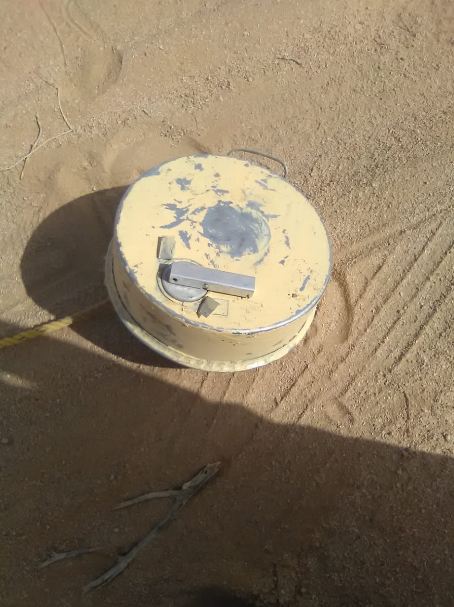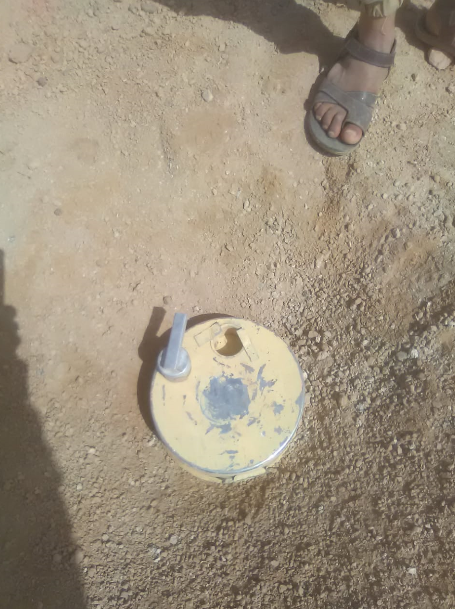Yemen: Evidence Shows Use of New “Barbaric” Victim-Activated Landmines
YEMEN / AGILITYPR.NEWS / July 07, 2021 / Project Masam releases evidence of new “barbaric” anti-personnel mines usage in Yemen, as demining teams also now directly targeted by anti-lift devices located in landmines.
Since the Yemeni civil war began in 2014, Houthi militias have used banned anti-personnel landmines and modified explosive devices at the expense of Yemeni civilians.
Project Masam can now reveal it has gathered strong evidence landmines including anti-personnel and anti-tank mines recently excavated and neutralised in Yemen are presenting new complex and more sophisticated technical aspects than those neutralised in 2018 when the programme was launched.
“Whilst improvised explosive devices [IEDs] are supposed or expected to be “booby trapped”, it is not common for landmines in Yemen to be booby-trapped. It is therefore a worrying trend that Project Masam deminers in Yemen are increasingly encountering landmines placed with an anti-lift device such as mousetrap switches designed to target the deminer,” Director Special Projects, Chris Clark, said.
“The device is simple yet effective and snaps into action when the landmine is lifted or disturbed from its original position in the ground causing the landmine to explode in the face of the deminer. The result? An already difficult and dangerous job made more difficult and more dangerous. Tragically, if the landmine is first found by a child, a farmer or herder, rather than by an experienced deminer, he has no hope of survival.”
The use of such booby-trapped or anti-lift devices in landmines is extremely rare and its increased usage in Yemen should be strongly condemned, Clark said.
Additionally, Project Masam is encountering another alarming trend in the increased use of barbaric over-kill in the usage and placement of anti-personnel (AP) landmines - a mechanism never seen before in Yemen.
“Anti-personnel landmines, whilst horrific in any usage scenario, are generally designed to wound; not kill the victim. Masam teams are now encountering AP victim-operated devices designed to cut a human body in two by use of blast and fragmentation,” Clark said. “This is a barbaric practice and should be universally condemned.”
Known as Claymore-type landmines, these directional mines are designed as an area weapon and typically designed to kill or injure over 20-30m distance. Masam is now encountering these Claymore-type devices placed inverted in the ground and victim-activated by an added pressure plate – a practice banned under international humanitarian law. Instead of exploding horizontally, the newly-placed landmines explode vertically, desintegrating the victim.
The use of anti-personnel landmines is prohibited under the 1997 Mine Ban Convention, to which 164 countries are party.
Ousama Algosaibi, Managing Director and Programme Manager for Project Masam, said: “In Yemen, anti-personnel mines are used indiscriminately and cause unnecessary suffering to civilians. Landmines now found in Ta’izz have actually been booby-trapped, which we did not find before. The Houthis are developing themselves into becoming more criminal. To ensure the safety of the demining teams, we are keeping up with their technology and developing counter methods to deal with these new modified mines.”

Booby-trapped anti-tank mine with anti-lift device found in location. Project Masam, Yemen, June 2021

Excavated booby-trapped anti-tank mine with anti-lift device known as mousetrap switch. Project Masam, Yemen, June 2021

Neutralised booby-trapped anti-tank mine with anti-lift device removed . Project Masam, Yemen, June 2021

Claymore-type anti-personnel mines placed inverted in the ground in new usage, with added pressure plates. Project Masam, Yemen, June 2021
About Us
Project Masam
To enhance the security measures in the region and ensure Yemen can rebuild and find stability, the Project for Landmine Clearance Masam was launched in December 2017, in agreement with the Yemeni government. Project Masam entered Yemen in February 2018 and demining operations began in June 2018.
Project Masam trains, equips and supervises over 450 Yemeni nationals. These include deminers, administration, logistics and security support staff, who are supported by experienced technical mentors. Masam's technical experts train the Yemeni deminers both in the use of the best equioment available and in current procedures to deal with explosive devices and ordnance in accordance to the International Mine Action Standards (IMAS), the standards in force for all mine action operations.
The project outputs include the rapid identification and clearance of landmines in Yemeni liberated areas, the identification and safe clearance of improvised explosive devices and technical and logistic support to the Yemen Executive Mine Action Centre (YEMAC).
The efforts have already created safe spaces to allow basic humanitarian and reconstruction activities to proceed safely and without fear.
Since the beginning of the programme, Project Masam has successfully cleared 24,123,141sqm of land, locating and destroying 259,984 explosive devices including 3,939 anti-personnel mines, 82,109 anti-tank mines, 167,883 unexploded ordnance (UXO) and 6,053 IEDs (as at 2 July 2021).
Project Masam’s work is conducted under the umbrella of the King Salman Humanitarian Aid and Relief Center (KSRelief), as part of the Kingdom of Saudi Arabia’s commitment to helping Yemen eliminate the humanitarian and developmental impact of landmines and other explosive items.
Contacts